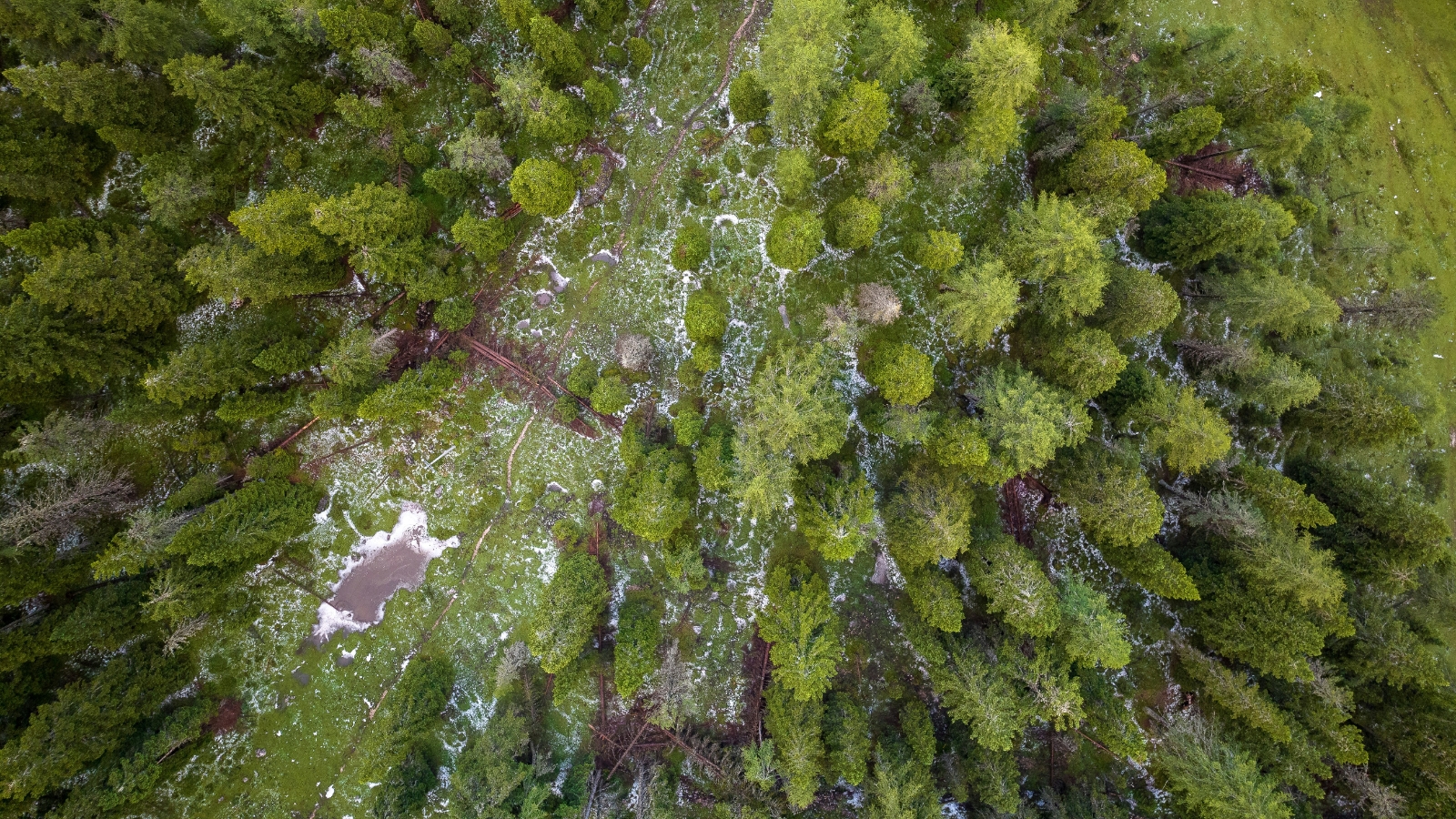Intention: To explore the frequency and intensity of ‘green noise’ and understand how to incorporate its soothing effects into one’s environment.
Green noise has emerged as a popular and effective tool for promoting relaxation, improving sleep, and enhancing focus. This unique type of sound, which falls under the category of colored noises, is characterized by its emphasis on lower frequencies and its resemblance to soothing nature sounds.
In this article, we’ll explore the science behind green noise, its various applications, and how you can incorporate it into your daily life to create a more peaceful and productive environment.

What Is Green Noise?
Green noise is a type of sound that has gained popularity in recent years for its calming and soothing properties. It is part of a family of sounds known as “colored noises,” which includes white noise, pink noise, and brown noise, among others. Each colored noise has a unique frequency spectrum that distinguishes it from the others.
Understanding Frequency Spectrum
To understand green noise, it’s essential to grasp the concept of frequency spectrum. Sound is made up of vibrations that travel through the air, and these vibrations have different frequencies. Frequency refers to the number of times a sound wave oscillates per second, measured in Hertz (Hz). The human ear can typically hear frequencies between 20 Hz and 20,000 Hz. Green noise is generally around 500 Hz.
Imagine a piano keyboard. The keys on the left side produce low-frequency sounds, while the keys on the right side create high-frequency sounds. The frequency spectrum is like a visual representation of all the possible frequencies a sound can have, arranged from low to high, just like the keys on a piano.
Different sounds have different frequency spectrums. For example, a bass drum has a frequency spectrum that is concentrated in the lower frequencies, while a flute has a frequency spectrum that is concentrated in the higher frequencies.
In the context of colored noises, the frequency spectrum describes how the power of the sound is distributed across different frequencies. White noise has equal power across all frequencies, meaning it sounds like a static hiss. Pink noise, on the other hand, has a power spectrum that decreases with increasing frequency, following a 1/f curve. This means that pink noise has more power in the lower frequencies and less power in the higher frequencies, creating a balanced, soothing sound.
Green noise takes this concept a step further. It has an even greater emphasis on the lower frequencies than pink noise, with a power spectral density that decreases with increasing frequency, following a 1/f^2 curve. This means that the lower frequencies in green noise are even more prominent, creating a deeper, more soothing sound that many people find relaxing.
The Characteristics of Green Noise
Green noise is a unique type of colored noise with a specific frequency spectrum. Its power spectral density decreases with increasing frequency, following a 1/f2 curve. This means that the lower frequencies in green noise have more power and are more prominent than the higher frequencies.
In practical terms, this means that green noise sounds deeper and more muffled than white or pink noise. It has a soothing, low-frequency rumble that many people find calming and relaxing. Some describe the sound of green noise as being similar to the gentle rustling of leaves or the soft patter of rainfall.
The emphasis on lower frequencies in green noise is what sets it apart from other colored noises and contributes to its unique calming properties. Studies have shown that low-frequency sounds can have a relaxing effect on the human body, reducing stress and promoting a sense of well-being.
One way to visualize the characteristics of green noise is to think of it as a spectrum of colors. Just as the color green sits between blue and yellow on the visible light spectrum, green noise sits between white and pink noise on the frequency spectrum. It has more low-frequency components than white noise, but not as much as pink noise.
This unique frequency spectrum is what gives green noise its distinct sound and makes it a popular choice for relaxation, sleep, and concentration. By understanding the characteristics of green noise and how it differs from other colored noises, you can better appreciate its potential benefits and decide if it’s the right type of noise for your needs.

The Sounds of Nature
The color choice for green noise is certainly not random, as ‘green’ is often associated with nature. It makes perfect sense that green noise is frequently linked to the soothing sounds found in natural environments.
While green noise is not as commonly found in nature as pink noise, many natural sounds have similar spectral characteristics. For example, the gentle rustling of leaves in a breeze, the soft babbling of a brook, or the sound of light rain falling on a forest canopy can all be reminiscent of green noise.
Other natural sounds that share similarities with green noise include:
- The distant rumble of thunder during a storm
- The low, soothing hum of cicadas on a summer evening
- The gentle crashing of ocean waves on a sandy beach
- The soft, rhythmic sound of wind blowing through tall grass or reeds
- The calming sound of a steady waterfall or cascading stream
Many people find the sounds of nature to be incredibly calming and relaxing. This is because these sounds often have a low frequency and a consistent, repetitive pattern. The human brain interprets these sounds as non-threatening, and they can help reduce stress, promote a sense of tranquility, and even lower blood pressure and heart rate.
Natural sounds are so effective at inducing relaxation because they are often similar to the sounds we hear in the womb. The low-frequency, muffled sounds of the mother’s heartbeat and the ambient noise of the womb are thought to be imprinted in our brains from an early age and associated with a sense of safety and comfort.
By incorporating green noise or nature sounds into our daily lives, we can tap into this innate relaxation response and create a calming environment that promotes well-being and reduces stress. Whether you’re listening to a recording of green noise or simply taking a walk in nature, the soothing sounds of the natural world can have a profound impact on your mental and physical health.

Applications of Green Noise
So, what are the most common reasons why someone might enjoy—or benefit from—listening to green noise?
Sleep Aid and Relaxation
One of the most common uses of green noise is as a sleep aid and relaxation tool. The soothing, low-frequency sounds can help to mask disruptive background noises and create a peaceful environment conducive to sleep. Some people find that listening to green noise can help them fall asleep faster and achieve a more restful night’s sleep.
Concentration and Productivity
Green noise can also be helpful for concentration and productivity. The consistent, low-frequency sound can help to block out distracting noises and create a focused environment. Many people find that listening to green noise while working or studying can help them maintain their concentration and be more productive.
Audio Masking
Audio masking is another common application of green noise. In situations where there is a need to reduce distracting or unwanted sounds, green noise can be used to cover up these noises. For example, in an office setting, green noise can be used to mask the sound of conversations or typing, creating a more peaceful and private environment.

Finding Green Noise Sources
Alright, so now you’re sold, but what is the best way to listen to green noise? There are plenty of ways to incorporate this soothing sound into your daily life. One of the easiest ways is to find green noise sources online. YouTube hosts a plethora of green noise videos, anywhere from one to twenty-four hours of uninterrupted listening. The video below is a great example.
If you prefer something a little more melodic or ‘natural,’ go for something with water sounds. Rain, waterfalls, and ocean waves are popular favorites.
Creating Your Own Green Noise
Another option is to create your own green noise using a sound mixer or audio software. By combining different nature sounds, such as leaves rustling or water flowing, you can create a custom green noise track that suits your preferences.
Incorporating Green Noise into Your Environment
Once you have a green noise source, you can incorporate it into your environment in various ways. You can play it through speakers or headphones while working, studying, or sleeping. You can also use a white noise machine or app that includes green noise settings to create a soothing background sound in your home or office.

Mellow Out With Green Noise
Green noise is a fascinating and useful tool for promoting relaxation, concentration, and overall well-being. By understanding its characteristics and how it relates to the sounds of nature, you can harness its power to create a more peaceful and productive environment.
Whether you use green noise for sleep, work, or simply to unwind, incorporating this soothing sound into your daily life can have numerous benefits. So the next time you’re looking to create a calming atmosphere, consider giving green noise a try and experience the tranquility of nature, even in the busiest of environments.















